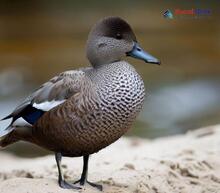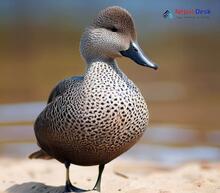The enigmatic world of avian species never ceases to fascinate those with an innate curiosity and love for nature. In this article, we will dwell upon the Mareca genus of ducks, which are particularly known to inhabit areas in Nepal. By exploring their evolution tree, we will gain a deeper understanding of how this captivating genus came into existence and flourished throughout the country.
Understanding the Mareca Genus
The Mareca genus belongs to the Anatidae family, which includes ducks, geese, and swans. Specifically, this genus comprises species often referred to as dabbling ducks – these are ducks that primarily feed by 'dabbling' on the surface of water bodies or by submerging their heads underwater while keeping their tails up.
Prominent species within the Mareca genus include the Eurasian Wigeon (Mareca penelope), American Wigeon (Mareca americana), and Chiloe Wigeon (Mareca sibilatrix). The Eurasian Wigeon, also known as the Widgeon or Wendel Whale, thrives in regions of Nepal and has been observed in several wetlands sites across the nation.
Tracing the Evolutionary Tree
Studying an evolution tree can unveil intriguing insights into how different species are related based on their shared ancestry, as well as show how they have evolved over time. In order to trace the origin and development of the Mareca genus in Nepal, we need a detailed examination of DNA samples and fossil records, which allows scientists to piece together an accurate evolution tree.
It is believed that the Mareca genus emerged from a common ancestor around 5-7 million years ago through a process called cladogenesis - this pertains to a splitting event where organisms evolve into multiple species due to geographical isolation or competition for resources.
Adapting to the Nepalese Ecosystem
The Mareca genus, particularly the Eurasian Wigeon, has adapted effectively to Nepal's diverse ecosystems. From wetland environments such as marshes and lakes in the lowlands (Terai region) to high-altitude habitats in the mountains, these ducks have demonstrated a remarkable ability to thrive across varied elevations.
Their diet primarily consists of aquatic plants, seeds, insects, and small mollusks which are abundant in both freshwater and saltwater habitats present in Nepal. Furthermore, the Mareca genus exhibits an extraordinary migrating behavior that has allowed them to conquer diverse ecosystems and ensure their survival over time.
In conclusion, the Mareca genus' journey through its evolution tree showcases nature's incredible power to diversify and adapt. Understanding these avian species' historical path helps us appreciate their existence in the picturesque landscapes of Nepal and inspires us to partake in conservation efforts that may ensure their continued presence on our planet. So next time you catch a glimpse of these dabbling ducks thriving in their natural habitat, take a moment to marvel at Mother Nature's masterpiece - the elegant result of millions of years of evolution.




